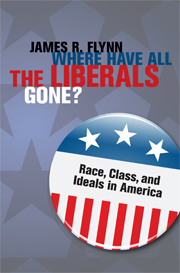Book contents
- Frontmatter
- Contents
- List of figures and maps
- List of tables
- List of boxes
- Acknowledgments
- Prologue
- Part I St. Thomas Jefferson
- 1 Something beautiful is vanished
- Part II Blacks and the pursuit of happiness
- Part III Yours for a better world
- Part IV A history of moral confusion
- Epilogue
- Appendix: tables with comments
- References
- Index of names
- Index of subjects
1 - Something beautiful is vanished
from Part I - St. Thomas Jefferson
Published online by Cambridge University Press: 22 September 2009
- Frontmatter
- Contents
- List of figures and maps
- List of tables
- List of boxes
- Acknowledgments
- Prologue
- Part I St. Thomas Jefferson
- 1 Something beautiful is vanished
- Part II Blacks and the pursuit of happiness
- Part III Yours for a better world
- Part IV A history of moral confusion
- Epilogue
- Appendix: tables with comments
- References
- Index of names
- Index of subjects
Summary
But when the dream departs
It takes something from our hearts
Something beautiful is vanished
And it never comes again
(Richard Henry Stoddard, 1825–1903)At the end of The Bell Curve, Herrnstein and Murray attempt to square their view of America with that of Thomas Jefferson. Their endeavors come as no surprise. In 1776, Jefferson wrote the Declaration of Independence and penned these words: “We hold these truths to be self-evident, that all men are created equal, that they are endowed by their Creator with certain unalienable rights, that among these are life, liberty and the pursuit of happiness.” In doing so, he struck a chord that has reverberated throughout American history. Virtually every major political actor on the American scene has quoted Jefferson's words and claimed to be a Jeffersonian, no matter how vigorously they disputed what his legacy entails.
But words can be mere words. If Americans have taken Jefferson seriously, we would expect to find some at least who have risked much to stand by his ideals. We would also expect periodic warnings about policies and developments that might prevent their realization in practice. Jefferson and his successors compiled a list of threats with imperialism, class, intolerance, and race most prominent. I have selected four giants to develop these themes.
- Type
- Chapter
- Information
- Where Have All the Liberals Gone?Race, Class, and Ideals in America, pp. 7 - 36Publisher: Cambridge University PressPrint publication year: 2008



